What to do if the washing machine does not get water?

The washing machineAs any other household appliance, is prone to stop working sometimes. One of the most common "caprices" is when the washing machine does not draw water. This usually happens at the most inopportune moment, and therefore throws the unprepared owner of the washing machine off-balance. It is not necessary to immediately take the machine back to the store, return it under warranty, or call repairmen at home. Of course, sometimes you can't do without these measures, but for a start, you can try to cope with the problem yourself.
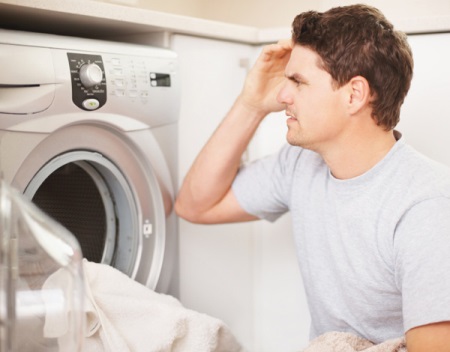
The main reasons
Not always the cause of failure is hidden in the washing machine itself. Sometimes it is all the fault of external factors, such as improper care or problems with communications. All causes for which the washing machine suddenly stops drawing water can be divided into two groups: external, not related to the machine, and internal, which relate to damage and malfunction mechanisms or other machine parts.
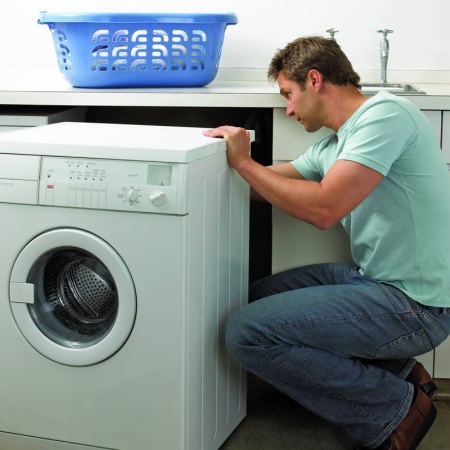
The first group includes:
- Lack of water supply or electricity. In these cases, you only have to wait for the water or electricity to be restored. Calling the utility company can speed up the process.
- Insufficient water pressure. This is usually due to a drop in pressure or a clog in the pipes. Here, again, a plumber from the utility company will come to your aid.
- Errors made when connecting the drain. In this case, you need to check whether the connection of the drain hose has been made in accordance with the instructions and, if necessary, reinstall everything again.
- Failure to comply with the rules of operation of the washing machine. This item includes many different reasons. Just reread the instructions: you may be doing something wrong.

The second group, in turn, can be divided into two large subgroups. The first subgroup - these are the reasons related to malfunction of mechanisms:
- Inlet valve filter clogged. If this is the case, you can say that you are lucky: you can solve this problem yourself, without involving a master. Simply gently pull out the filter with pliers, rinse under running water, and put it back in.
- Other intake valve failures are much more difficult to fix, you will most likely need to replace it.
- The door won't close. It is possible that some foreign object simply got into the lock, or perhaps the element responsible for locking the hatch failed.
- The drain pump is broken. Here you will need the advice of an experienced craftsman: he will tell you whether the unit can be repaired or you will have to buy a new one.
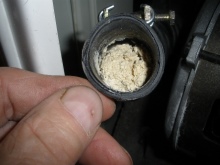
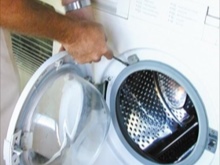
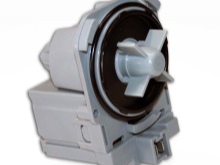
The second subgroup - these are the reasons associated with the malfunction of electronics.
- Malfunctions in the electronic control unit. The causes can be a great many, but in any case, not having special knowledge, it is better not to try to fix the breakdown on your own, and it is necessary to seek help from a professional. Sometimes it is enough just to clean the contacts, and sometimes you have to order a new part.
- The pressure and water sensor does not work. As in the previous case, an experienced technician will help to identify the problem. But to solve it, most likely, only by replacing the element.
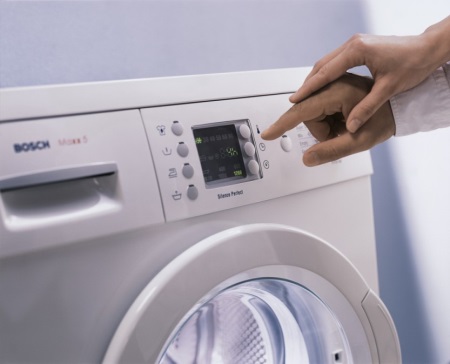
Methods of diagnosing the problem
If you managed to find out that the washing machine does not draw water for a reason related to the malfunction of any of its parts, then, first of all, look at the documents that were issued to you at the purchase.
If the unit is still under warranty, then you should not try to fix the problem, because the service centers usually do not accept appliances that have already been repaired. Take your washing machine to a service center and have it taken care of by professionals.
If the warranty has expired, however, you can try to diagnose the problem yourself.
For example, you could check the pressure sensor:
- СRemove the hose through which the water comes, and blow into it.
- If everything is functioning properly, you will hear a clicking sound.
You can also take the hatch apart and test the automatic lock: when you close the door, the relay limit switch should be pressed by the tongue. Otherwise - the lock does not happen and the water does not come.
It should be noted that if you doubt your repair skills, it is better not to touch the screwdriver and do not disassemble the washing machine. Sometimes calling a specialist is cheaper than buying a new machine instead of the one that was damaged during the illiterate self-repair.
Self-troubleshooting
If you are confident in your abilities and have enough knowledge about household appliances and electronics, you can try to solve the problem yourself.
Let's consider the most common causes of failure and ways to fix them:
- The washing machine does not draw water due to the fact that the hatch does not close. In this case, disassemble the door and return the metal rod, which fixes the locking tab, to its original position. It may be necessary to buy a new thermal lock.
- Water does not come in due to a faulty inlet valve. First, disconnect the hose through which the water should come and check the filter. If it's clogged, simply rinse it out and put it back in place. But it also happens that the cause is a blown coil winding. In this case, it will have to be replaced.
- The washing machine does not get water, because the programmer does not work. The programmer is a peculiar brain of the appliance, therefore at the slightest malfunction there are interruptions in the operation of the washing machine. Some breakdowns of this system can be repaired by yourself. For example, if you manage to find out that there is soot on the contacts, fill a syringe with contact cleaning fluid and inject it into the desired section.

Another possible cause of failure, which we have not yet mentioned, is a faulty heating element.
It is quite possible to replace the heating element yourself, the main thing is to find the one that fits your model of washing machine.
Sequence of actions:
- Remove accumulated water from the tank before dismantling the old TEN.
- Disconnect the wires from the heating element and loosen the fastener.
- Carefully push out the fastening element and slowly remove the heating element.
- Clean the tank of dirt and scale.
Install the new heating element in the reverse order, remembering to check heating and tightness before proceeding with the laundry.
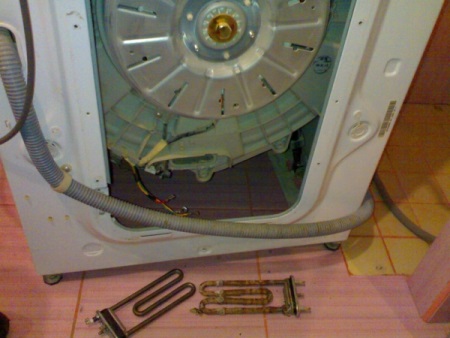
Fault prevention
In most cases, breakdowns, due to which the washing machine stops getting water, are associated with violation of operating rules. To avoid these problems will help to observe a few simple recommendations:
- Every washing machine has a compartment in which, over time, various small objects accumulate, lost during the washing process. These can be buttons, coins, ribbons, in general, anything that can fall out of pockets or fall off the clothes. Therefore, it is necessary to check the bottom of the hatch from time to time for foreign objects in it.
- Try to protect the washing machine from power surges. Use a residual-current device and a powerful varistor with the appropriate characteristics.
- To prevent the formation of limescale on the inner parts of the washing machine, use a special preventive agent when washing. A large selection of such products is available in the hardware departments of hypermarkets.
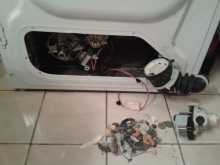
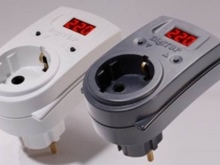
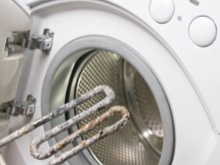
Siphon installation
The washing machine may refuse to draw water if the siphon is not properly installed. On how to do it correctly, you will learn from our instructions. Traps for washing machines come in three types: combined, outdoor and built-in.
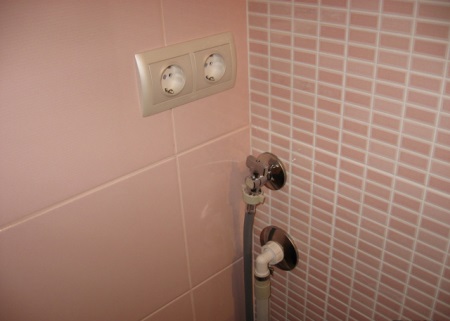
The type of siphon largely determines how it is installed:
- Combined siphon is installed in the same way as the sink siphon. The difference consists only in the fact that the washing machine siphon is supplemented by another pipe with a pipe cleaner, which is screwed in a certain place.
- External siphon is attached to the wall with a special bracket, then with a flexible hose or plastic pipe connected to a tee sewer, and only then - to the washing machine.
- Built-in siphon Fitted in a small hole in the wall, which is hollowed out with a hammer drill. Then the water and sewage pipes are brought to the place of installation and fastened to the wall. After that, you must install a siphon and connect it to the pipes. The hole in the wall is sealed with cement mortar and masked with a decorative coating. The final step is to connect the washing machine to the siphon and utilities.
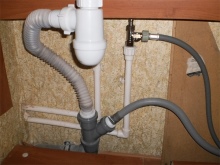
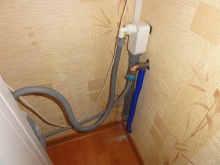
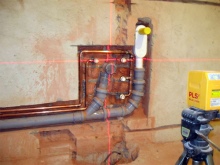





I can't imagine life without a washing machine. And I broke down((.